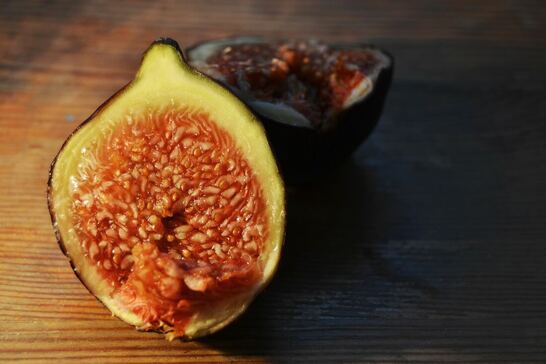- HOME
- INTRODUCTION
-
FOUNDATIONS
- A PERSONAL RELATIONSHIP WITH GOD
- A BRAND NEW LIFE >
- THE GRACE OF BAPTISM
- THE POWER OF BIBLICAL BAPTISM
- THE HOLY SPIRIT AND YOU >
- THE POWER OF THE CROSS
- MISSING THE MARK: OVERCOMING GUILT AND SHAME
- GODS PROMISE OF PROVISION
- EXPERIENCING GODS PRESENCE
- PSALM 91 (PASSION TRANSLATION)
- WHO AM I REALLY?
- WHERE DO WE COME FROM?
- MEET THE MAKER...
- NEW MINDSETS
-
KINGDOM LIVING
- THE GIFT OF RIGHTEOUSNESS
- BEING FRUITFUL
- SLAYING GIANTS
- HOPE FOR THE HURTING
- DEVELOPING LIFE RHYTHMS
- THE RHYTHM OF DEVOTION PART 1
- THE RHYTHM OF DEVOTION PART 2
- THE RHYTHM OF SABBATH
- THE RHYTHM OF FESTIVAL
- THE RHYTHM OF SEASONAL LIVING
- THE RHYTHM OF PLAY
- THE RHYTHM OF MEALTIMES
- THE RHYTHM OF COMMUNITY
- THE RHYTHM OF SOLITUDE
- BLOG
- CONTACT
SEASON OF NEW BEGINNINGS
Next week marks the period before the crucifixion which many Christians celebrate as 'Holy Week'. Jesus taught many significant things during this week, one of which is the focus of this week's blog:
The next day as they were leaving Bethany, Jesus was hungry.
Seeing in the distance a fig tree in leaf, He went to find out if it had any fruit. When He reached it, He found nothing but leaves, because it was not the season for figs. Then He said to the tree, “May no one ever eat fruit from you again.” And His disciples heard Him say it. In the morning, as they went along, they saw the fig tree withered from the roots. Peter remembered and said to Jesus, “Rabbi, look! The fig tree you cursed has withered!” [Mark 11:12-14, 20-21]
The story of the cursing of the fig tree needs a bit of pondering, as it makes Jesus appear irritable and vindictive. And we know that is not a true reflection of His character.
FF Bruce gives this explanation in his book 'Hard Sayings of Jesus' (see below):
Was it not unreasonable to curse the tree for being fruitless when, as Mark expressly says, "it was not the season for figs"?
The problem is most satisfactorily cleared up in a discussion called "The Barren Fig Tree" published many years ago by W. M. Christie, a Church of Scotland minister in Palestine. "Now," wrote Christie, "the facts connected with the fig tree are these. Toward the end of March the leaves begin to appear, and in about a week the foliage coating is complete. Coincident with [this], and sometimes even before, there appears quite a crop of small knobs, not the real figs, but a kind of early forerunner. They grow to the size of green almonds, in which condition they are eaten by peasants and others when hungry. When they come to their own indefinite maturity they drop off." These precursors of the true fig are called taqsh in Palestinian Arabic. Their appearance is a harbinger of the fully formed appearance of the true fig some six weeks later. So, as Mark says, the time for figs had not yet come. But if the leaves appear without any taqsh, that is a sign that there will be no figs. Since Jesus found "nothing but leaves" -- leaves without any taqsh-- he knew that "it was an absolutely hopeless, fruitless fig tree" and said as much. THE VITAL IMPORTANCE OF BEARING FRUIT
Jesus' cursing of the fig tree was a prophetic enactment of a parable He had told earlier [Luke 13:6-9]. The leafy fig tree symbolised those of His compatriots who had the trappings of religion, but no fruit born of faith; in particular, they did not believe in the very One they had been supposedly waiting for.
Fruitfulness is a big deal to Jesus:
John 15:1-2 Matthew 21:43 And we do well to take note. Religious observance is of no consequence to Him, what He is looking for is some evidence of fruit in our lives.
What kind of fruit is He looking for?
Hmm... How am I doing Lord?
NEXT WEEK: GRACE! GRACE! GRACE!
Thoughts for Good Friday... GET IN TOUCH!
[Photo credits: Weronika Marcinczyk (fig); Peter Keller (grapes); Markus Winkler (typewriter) @ Unsplash, with thanks]
0 Comments
Leave a Reply. |
PREVIOUS COLLECTIONS
All
|
|
All text and photographs,
unless otherwise credited © rhythmsofgraceuk.org All rights reserved. |
**The owner of this website, www.rhythmsofgraceuk.org is a participant in the Amazon Services LLC Associates Programme. This is an affiliate advertising programme which earns fees for sites which advertise and link to products supplied by Amazon properties, including, but not limited to, amazon.com, and amazon.co.uk.
Please note: commissions are supplied by Amazon; there are no hidden costs for visitors to this website, and all resources shown are genuine recommendations, CONTACT ME
|






 RSS Feed
RSS Feed
